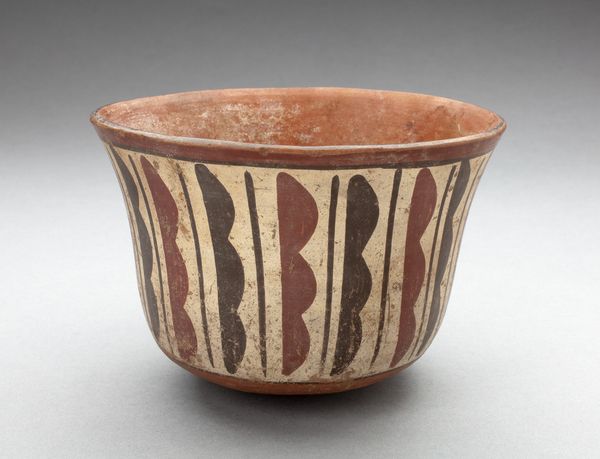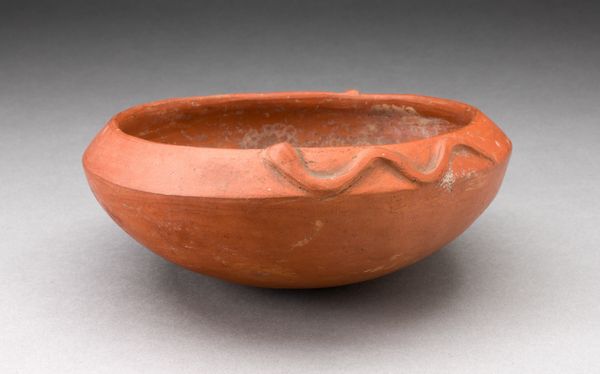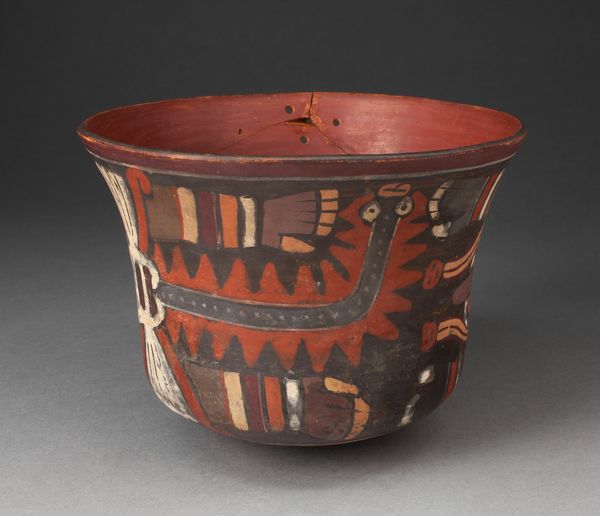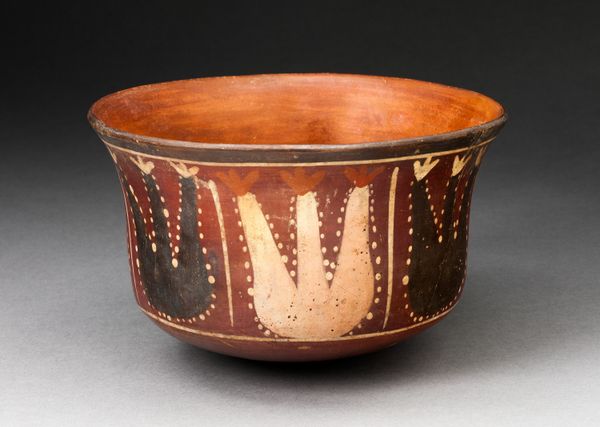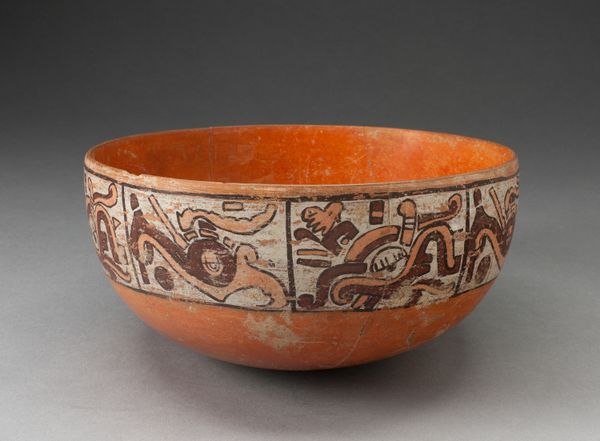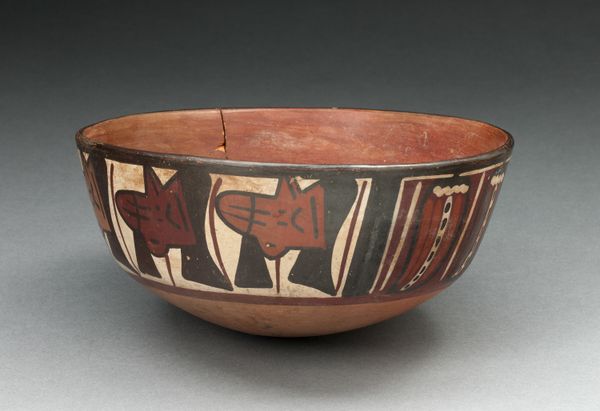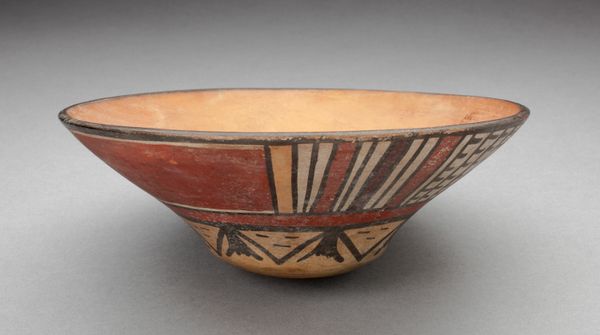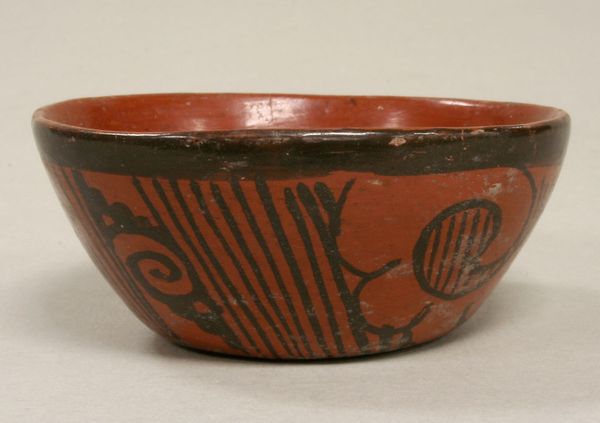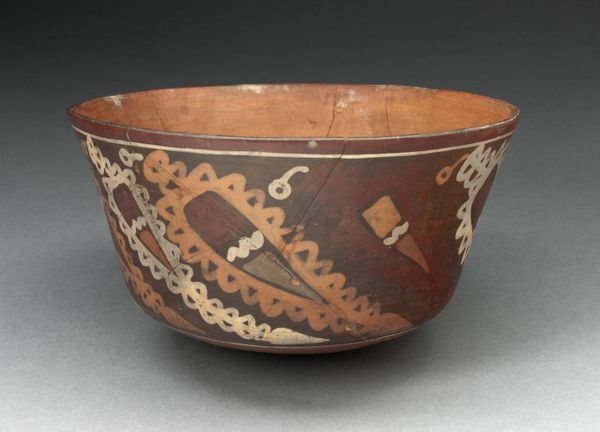
Polychrome Bowl with Geometric Designs and Face in Relief on Shoulder c. 400
0:00
0:00
ceramic, earthenware
#
ceramic
#
earthenware
#
geometric
#
ceramic
#
indigenous-americas
Dimensions: Diam. 33 cm (13 in.)
Copyright: Public Domain
Editor: So, here we have a Polychrome Bowl with Geometric Designs and Face in Relief on Shoulder, from around 400 CE, created by the Chupícuaro people. It's earthenware, and quite striking in its simplicity. What stands out to you the most when you look at it? Curator: What intrigues me is thinking about the hands that made it. How the raw materials—the clay, the pigments—were sourced, processed, and transformed. Was this made by a specialist or by someone within a household unit for everyday use? Editor: That's fascinating, I hadn’t thought about that. The care taken in creating those geometric designs... how do you think those designs were applied? Curator: We see evidence of slip-painting – refined clay mixed with mineral pigments applied before firing. I'd be interested to know more about the division of labor involved. Was the forming done by one set of hands and the decoration by another? Who controlled the knowledge and access to resources like the pigments, which may have come from specific, distant locations? Editor: Right, it makes you think about the value placed on these objects. Curator: Absolutely. Was this strictly utilitarian, or did it also function as a display of skill, a marker of social status, or a votive offering? The inclusion of a face in relief suggests it may have served ritualistic purposes, but we must also look at the labor embedded in its production and circulation within the community. Editor: That gives me a completely different way to look at this bowl. Considering it not just as an art object but as evidence of the labor and resources that went into its creation. Curator: Exactly. And how its function intertwined with the material realities of the Chupícuaro people. What we consume, both then and now, carries meaning far beyond its surface appearance.
Comments
No comments
Be the first to comment and join the conversation on the ultimate creative platform.

